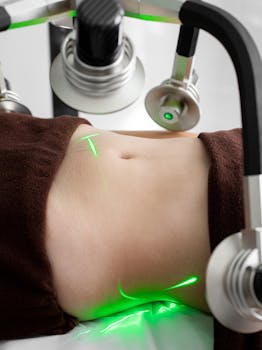Understanding tummy tuck muscle repair failure symptoms is important if you or a loved one has undergone abdominoplasty. While many patients experience smooth healing and improved core strength after muscle plication, a minority may have complications that affect abdominal function, appearance, or comfort. This guide explains typical warning signs, likely causes, diagnostic steps, and treatment options so you can recognize problems early and seek appropriate care.
tummy tuck muscle repair failure signs and what they mean
Muscle repair during an abdominoplasty involves suturing the rectus muscles back toward the midline to tighten the abdominal wall. When that repair doesn’t hold, symptoms can range from purely cosmetic to the kind that interfere with daily activity. Common signs include a recurrent bulge or “pooch,” persistent pain, uneven contours, and a feeling of weakness or separation in the midline. These issues may appear early after surgery or emerge months later as sutures stretch or tissue gives way.
How failure occurs: causes and risk factors
Repair failure can stem from technical factors (suture placement, tension, or technique), patient-related factors (smoking, obesity, poor nutrition, chronic cough), or post-operative behaviors (lifting too soon, strenuous exercise). Infection, seroma (fluid collection), or wound breakdown can also undermine the repair. Understanding the cause helps determine whether non-surgical measures, revision surgery, or supportive care is the best next step.
Symptoms to watch for and when to seek help
- Visible or palpable bulge in the abdominal midline that was previously corrected.
- Persistent or worsening pain not relieved by usual measures.
- New or recurrent separation (diastasis) noticed with straining.
- Asymmetry of the abdomen, changes in the scar, redness, or drainage that could suggest infection.
- Functional problems such as difficulty engaging core muscles, coughing, or lifting.
If any of these symptoms appear, contact your surgeon promptly. Early evaluation may identify reversible issues like seroma or superficial wound problems that can be managed without major revision.
Diagnosis and tests commonly used
Diagnosis often starts with a careful physical exam and history. Imaging such as ultrasound or CT scan can confirm separation, evaluate suture integrity, and rule out other causes like hernia. In some cases, dynamic imaging while performing Valsalva maneuvers helps visualize abdominal wall weaknesses. Referral to a specialist in abdominal wall reconstruction may be advised for complex or recurrent cases. For background on the procedure itself, see this overview of abdominoplasty on Wikipedia: abdominoplasty (tummy tuck).
Treatment options: conservative to surgical
Mild cases may respond to conservative measures: physical therapy focused on core re-education, temporary support with abdominal binders, and resolution of contributing factors such as smoking or weight instability. For persistent or severe failures, revision surgery is often required to re-approximate the muscles, reinforce with stronger sutures or mesh, and correct any skin or scar issues. Discuss realistic goals, risks, and recovery timelines with a board-certified plastic surgeon experienced in revisions.
Pros, cons, and setting expectations
Choosing revision surgery carries pros—improved contour, regained core stability, and relief from discomfort—and cons, including additional scarring, surgical risk, and recovery time. Not all patients will achieve the same degree of improvement as with their initial surgery. Managing expectations, optimizing medical conditions before surgery, and following a carefully staged rehabilitation plan improve the chances of a successful outcome.
Post-operative skin care and scar management support overall healing. For broader guidance on gentle, sustainable skincare practices that can aid recovery and scar health, consider reading about eco-conscious routines and products that are also skin-friendly: sustainable skincare practices for healthy skin.
- Careful preoperative optimization (stop smoking, manage weight) lowers failure risk.
- Early signs—bulge, pain, asymmetry—warrant prompt assessment.
- Imaging and physical exam guide whether conservative care or revision surgery is needed.
- Revision can improve function and appearance but carries added risks and recovery time.
Q: How soon after surgery do failures usually show up?
A: Some issues are apparent in the early weeks (infection, seroma, wound problems), while structural failure of the muscle repair may become noticeable months later as sutures stretch or tissues are stressed. Any concerning change should be checked without delay.
Q: Can physical therapy fix a failed muscle repair?
A: Physical therapy can help in mild cases by strengthening surrounding muscles and improving function, but it won’t re-close a true separation or replace disrupted sutures. Therapy is often used as part of a comprehensive plan or while preparing for potential revision surgery.
Q: Is mesh ever used in revision surgery?
A: Yes—mesh reinforcement can be used in select revision procedures to provide additional support to the abdominal wall, especially when tissue quality is poor or there is a recurrent hernia. Discuss benefits and risks with your surgeon.






